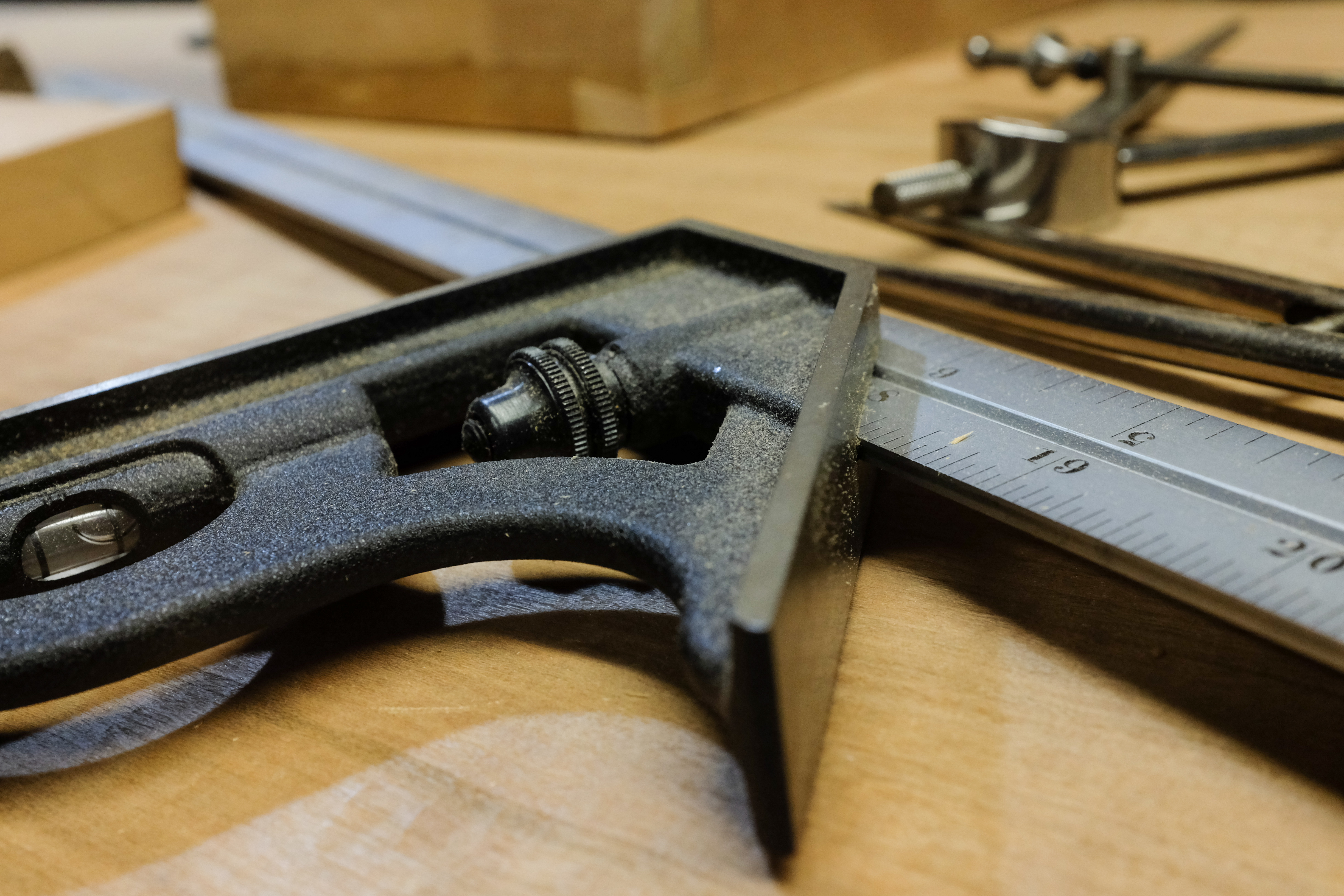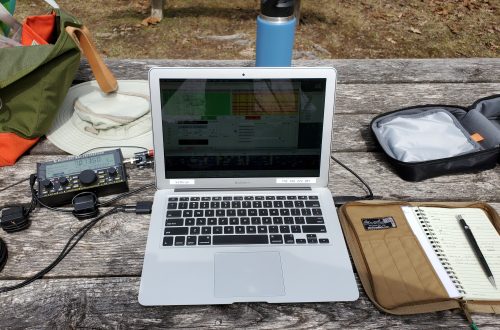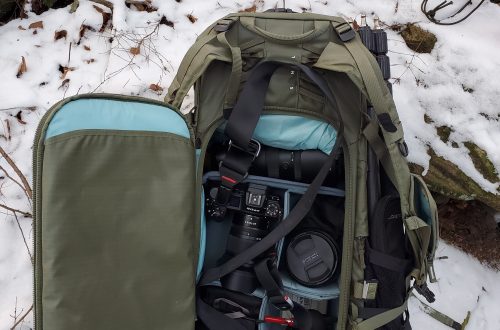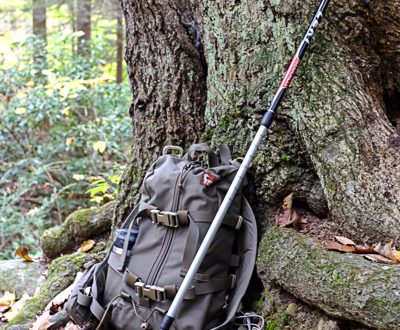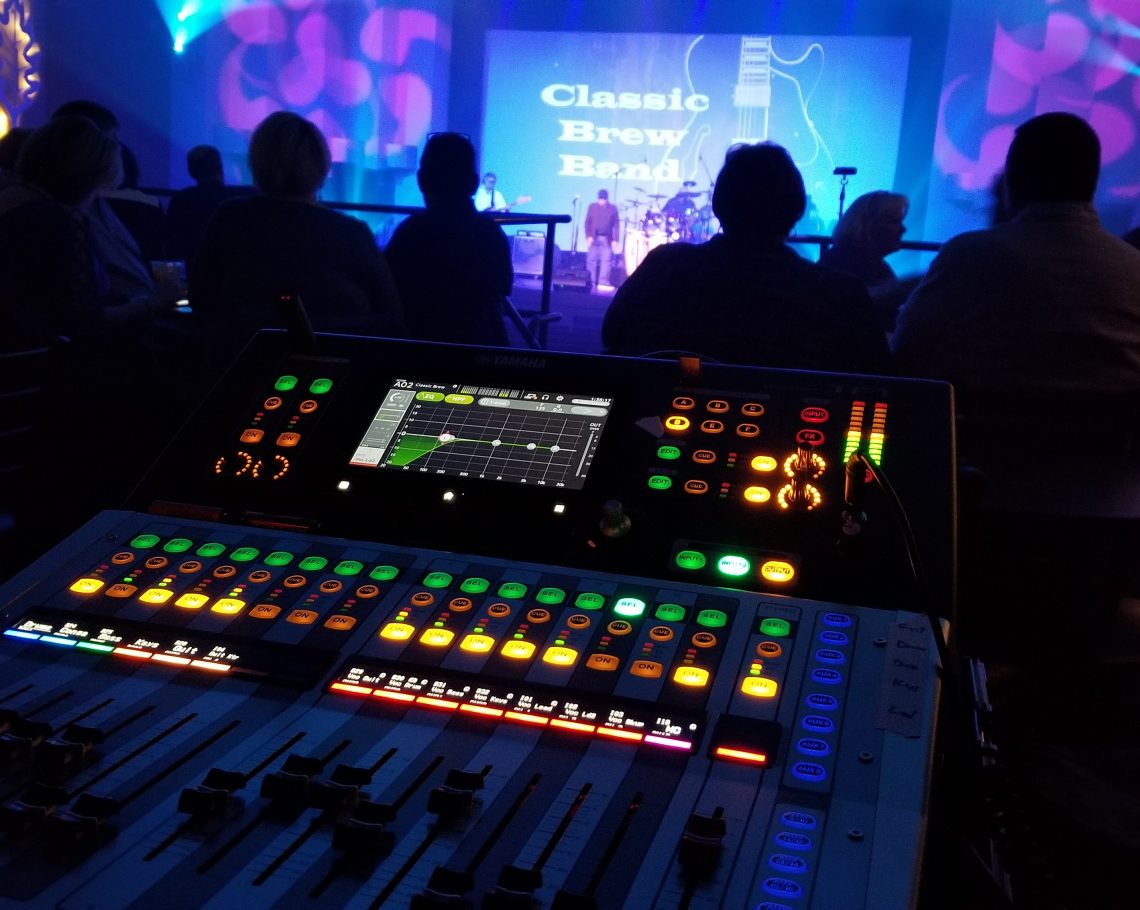
Show Log: Classic Brew Band at the Oaks Theater, March 9 2019
Hi blog. It has been a while since I posted any techie stuff here. For a while, I had split off most of the tech stuff into a separate blog at my Dryrose domain. That was fine and lowered the level of geeky tech stuff here, but it was yet another thing that had to be maintained, updated, etc. Really, the tech work I do there is a personal interest thing. I’ve decided to start posting that content here again. It is part of our shared adventures, so it probably works. You can always feel free to skip past it, if these sorts of things are boring.
I had the opportunity to work sound for the Classic Brew Band at the Oaks Theater in Oakmont on Saturday. I first worked a show with them at the New Kensington Arts and Music Festival back in 2017. That was a festival-format event, and we were brought in to provide sound services for the day. They opened the festival, and played a great set. They were a pleasure to work with, and they later asked if we were available to do other shows with them.
They have contacted me about a few shows, but the schedule wasn’t working out until they landed a show in the fall of 2018 at the Oaks Theater. We were able to make it work, and had a great time. They were happy, we were happy, it was a good Saturday night. That was my first time working a show at the Oaks, so it took a while to get things set up and dialed-in that day. My Dad and BIL Jack came out to help with that show. It worked well, but I had a list of things I wanted to do differently if we were ever back.
As it turns out, we would be back! Our schedules linked up again for a show that took place yesterday, March 9, at the Oaks. This time, I had a much better idea of what we would need, so loading the truck up on Friday was much easier. I brought a lot of stuff the first time, not knowing what was there or what we would need to do to set up the PA. This time, I knew how all of those pieces fit together, so I was able to pack less. That’s always helpful. My Dad and Jack were signed-on again for the fun, so I had great crew on board.
I ran my JTR Speakers Noesis 3tx tops with the Captivator 212pro subs. Amplification was a QSC PLD4.2, which is a great four-channel amp, and system processing was handled by the Xilica XP4080. This is my standard PA rig these days. It is compact, relatively lightweight, and I can move the whole setup easily by myself (though it is always easier and faster with crew, especially with good crew like Dad and Jack!). I normally run this in a 3×3 configuration (three inputs, three outputs: Left, right, and sub). I let the Xilica handle the high-pass filtering for left and right, and the low-pass filtering for the sub, using roll-off frequencies I’ve tuned as I’ve used the system more. This time, though, I wanted to try something different. I wanted to run full-bandwidth left and right from the board, then let the crossover in the Xilica handle filtering and sending audio to the sub.
Why is this important and how is it different than what I was doing? Well, what I had been doing is choosing the channels that should be fed to the sub in addition to the left and right outputs. This is a fairly standard practice in PA system setup, especially in the theatre world, where clarity and system dynamic range is extraordinarily important. It helps to keep extraneous “stuff” out of the sub channel, cleaning up the signal there, and thereby helps to increase potential clarity. An important difference, though, is the lower crossover frequency between sub and tops in PA systems where that became common practice. Those systems might cross over to subs at 80Hz or lower, sometimes much lower. My PA rig is designed to cross over between 90-100Hz, which helps the tops (which are each two 10″ cones and coaxial midrange and HF drivers mounted on a horn for pattern control) to maintain their clarity and operate at peak efficiency, and the subs are designed to go up to meet them at that higher frequency. There are a lot of instruments that have audio detail in that 100Hz range that might not have sub-bass in the typical sub range. Running with a separate sub channel could result in loss of some low-frequency detail if things were not routed to the sub channel. This resulted in almost everything being routed to the sub channel anyway, defeating most of the purpose of running a separate sub channel in the first place. I still had to run high-pass filtering on most channels that didn’t have sub info anyway, so it ended up being harder than necessary, and I had a feeling it was affecting the overall sound of the rig, too.
Hoo boy. Running the system this way was an AMAZING difference to me. It may not have sounded much different to the average listener, but it was a lot easier for me to get it to that sound. I didn’t need to work as hard to make it sound good. I definitely had better system control, and I think it sounded better!
The show itself went off without much of a hitch, except a couple of issues I had with the recording setup. I have a few G-Technology portable drives that I use for high-speed high-volume data storage, like photos, vidoes, and other media. I bought two 7200 RPM G-Drive Mobile USB drives for media work. One failed a couple of months ago at the connector. Well, the second one that I took along to do this recording did the same thing, disconnecting itself twice during the evening. The end result was that the multitrack recording probably missed a few songs. This was just an extra I was doing to build a small bit of multitrack example sound I can use to do system tuning and processing setup in the future, and so I could provide the band with the raw data that they could take to mix down however they choose, so this loss isn’t a big deal. However, now I have two of these drives that have failing interfaces, so now I need to get off my duff and contact the company to see if I can get a warranty replacement.
We mic’ed pretty much everything, with some DIs involved. Here’s what we had on stage (all stands are K&M, which are freaking fabulous; I’ll never buy another brand):
- Drums
- Kick: Sennheiser e604
- Snare: Shure SM57
- Toms: Sennheiser e602’s (3)
- Overheads: Shure KSM137’s (2)
- Congas: Shure SM57
- Bass: DI from SansAmp pedal
- Keys (dude also had an old-school MiniMoog, the real thing!): Passive DI from amp
- Guitar: Shure SM57
- Acoustic Guitar: DI from Fishman amp
- Vocals
- Drums: Headset (artist-provided)
- Bass: Shure Beta 58
- Keys: Shure Beta 58
- Guitar: Shure Beta 58
- Lead: Shure SM86 (wireless)
We ran the Yamaha TF1 console for the show, which provides a lot of flexibility and allows us plenty of I/O, so we could easily run five monitor mixes for the floor wedges. We had a Tio1608 I/O unit to go along with it for extra I/O on the TF, as we had about 20 inputs total, and seven outputs. The TF1 provides 16 inputs and outputs on board, but since we interface with an in-place analog snake at this venue, it is easier to place the I/O unit near the snake tails, which are a little separated from where we set up the board. That handles most of the inputs and all of the outputs, and then we can just extend the extra four channels to the TF1 on-board I/O. We also used the Dante interface to get audio to the computer for recording, and used the wireless access point so we could run an iPad for remote control of the console from the stage during setup.
Someday, I’d love to bring the Yamaha CL1 in here for a show. That board gives me a lot more processing power and the ability to do some even more advanced compression and limiting on groups and such, which I can’t do on the TF series. That is a bit of a beast to move and set up, though, and until I get a cap on the truck, it isn’t practical to move for a one-night engagement.
It was a fun night. Now I’m tired and I have a truck I need to unload in the next day or two, but it was worth it. It was really nice having Jack and Dad along as crew, too. They know stuff and I could leave them with a stage diagram to set up the stage while I worked setting up the mix position. I think we all went home pretty tired (and, of course, we had to “spring ahead” right after we got home!), but I think we all had fun. Also big thanks to my little sister Marissa for providing food for us after setup!
